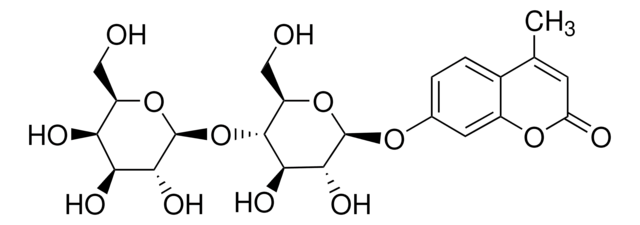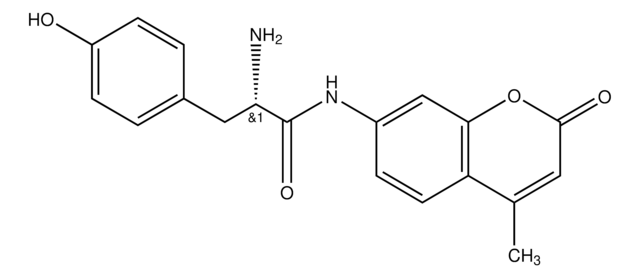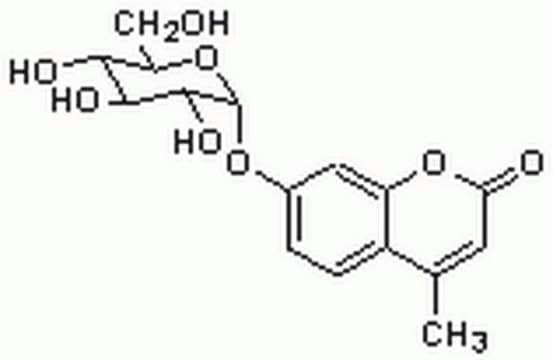M6018
4-Methylumbelliferyl β-D-cellobioside
glucanase substrate, fluorogenic, ≥98.00% (TLC), powder
Synonym(s):
4-Methylumbelliferyl beta-D-cellobioside
About This Item
Recommended Products
product name
4-Methylumbelliferyl β-D-cellobioside, glucanase substrate
Quality Level
assay
≥98.00% (TLC)
form
powder
solubility
water: 19.60-20.40 mg/mL, clear, colorless to faintly yellow
storage temp.
2-8°C
SMILES string
CC1=CC(=O)Oc2cc(O[C@@H]3O[C@H](CO)[C@@H](O[C@@H]4O[C@H](CO)[C@@H](O)[C@H](O)[C@H]4O)[C@H](O)[C@H]3O)ccc12
InChI
1S/C22H28O13/c1-8-4-14(25)32-11-5-9(2-3-10(8)11)31-21-19(30)17(28)20(13(7-24)34-21)35-22-18(29)16(27)15(26)12(6-23)33-22/h2-5,12-13,15-24,26-30H,6-7H2,1H3/t12-,13-,15-,16+,17-,18-,19-,20-,21-,22+/m1/s1
InChI key
PRTGXBPFDYMIJH-MKQZUAMYSA-N
Application
- to assay cellulase from A. niger
- to determine the extracellular enzyme activity for 1,4-β-cellobiohydrolase
- to assay the activity of bound enzyme, endoglucanase I (EGIc) Trichoderma reesei class II hydrophobins (HFBI)
Biochem/physiol Actions
Storage Class
11 - Combustible Solids
wgk_germany
WGK 3
flash_point_f
Not applicable
flash_point_c
Not applicable
ppe
Eyeshields, Gloves, type N95 (US)
Certificates of Analysis (COA)
Search for Certificates of Analysis (COA) by entering the products Lot/Batch Number. Lot and Batch Numbers can be found on a product’s label following the words ‘Lot’ or ‘Batch’.
Already Own This Product?
Find documentation for the products that you have recently purchased in the Document Library.
Customers Also Viewed
Our team of scientists has experience in all areas of research including Life Science, Material Science, Chemical Synthesis, Chromatography, Analytical and many others.
Contact Technical Service














